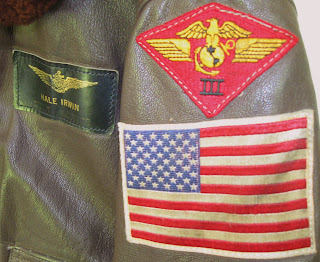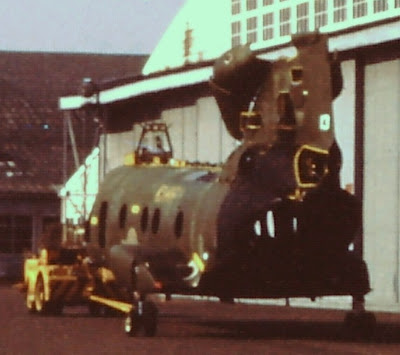I have always had a love for machinery and cars. I first learned to drive tractors as a kid working on the dairy farm I described in an earlier post. At that time I was introduced to an old WWII Dodge Power-Wagon. I learned to drive this truck where every shift required double clutching because the transmission had no synchromesh. During my 17th summer I terrorized the back-roads of Chester County, Pennsylvania in my brother's 1959 VW Beetle. I was "caring for it" while he was touring Europe.
I bought my first car just before graduating from College. The dealer let me have it with no payments due until I started flight training in the Summer! Of all the cars I have owned I think this is the one I would like to have back! She was a sea-foam green Mustang-289 with the standard 3-speed on the floor. She was decked out with an 8-track with box of great tapes such as Johnny Rivers and Merle Haggard. I soon replaced the bias-ply tires with the brand new technology: Michelin Radials! Check out those driving lights in the grill. These were 400,000 candlepower aircraft landing lights from J.C. Whitney! You could feel the heat from them through your jeans standing 3 feet in front of the car. They would light up the highway for miles which was a good thing because it was fairly regularly she saw over 110MPH returning to Whiting Field from Pensacola on a barely used new section of interstate. At that time most of us didn't worry that smoking and speeding were hazardous to our health..... We thought we were all headed to 'Nam probably with one-way tickets.
The Mustang carried me from Vermont to Florida to California accumulating over 60,000 miles in 18 months.
Of all my cars this was the best... costing about what my Specialized Roubaix road bicycle costs today!
 | |
| 1968 MUSTANG |
While stationed in Okinawa and Japan I ferried helicopters between the two islands. We usually bought a couple of motorcycles in Atsugi, Japan and "brought" them to Okinawa on the aft ramp of our CH-46-s. If we developed engine problems - the bikes would be the first things tossed overboard into the sea. My bike was a Yamaha-250 Enduro. We would ride these dirt bikes all over the Northern Training areas of Okinawa which were set aside as tank and artillery training areas. I sold the 250 just before I rotated home. I bought a Yamaha-360 which I shipped home. I rode it a week before selling it - knowing it was more than I could handle... I got rid of it before it killed me!
 |
| Heading to the BOQ at MCAS Futema, Okinawa |
Before returning from overseas I took advantage of a special deal for returning GIs. I ordered a beautiful Red MGB with a black removable hard top and fog lights - direct from the manufacturer in England. I would pick up the car at Boston harbor when she arrived. It is a sad story.... The delivery was about 2 months late so I had to rent a car at my new duty station, Cherry Point, NC just to get around.... but I new the wait would be well worth it! Finally the big day came. I drove up to Boston and went down to the docks. I checked in at the trailer where the stevedores worked at unloading all the cars. The supervisor asked me what my MG looked like so he could find it quickly in the dock covered with newly unloaded MGs. I described the red car and black extra roof. Oh Shit! was his response. "One car was smashed against the side of the ship due to a mishap with the crane - it was yours. It is totaled."
To make a long story short, I traded my wreck and a few bucks for a new British Racing Green MG at a sympathetic dealer in Wellsley who had been at the docks when I learned of the disaster!
I was soon back in North Carolina in my new MG!
 | |
| A car similar to my MGB. Mine did not have the classy wire wheels. |
The MG did not last past its first oil change! While at the MG dealer I lost my heart to a used Lotus Europa even though it was an ugly yellowish color. It had a Renault double overhead cam engine with dual Weber carbs. The story was the steering wheel had come off the car Jim Clark drove at Indy. (I now doubt this) This mid-engine car was quick and handled like it was on rails.
The Lotus came to its demise when a carburetor bolt sheared off while driving down the main drag at MCB Quantico. The carbs jammed at full throttle and I finally pulled over and jumped out as the RPMs passed through 11,000, about to blow up! Some Marines in the Motor-T shop at my squadron rebuilt the engine.
 |
| My First Lotus |
 |
| Hale's Lotus Europa John Player Special Commemorative |
 |
| Emerson Fittapaldi in the Lotus F-1 |
XXXXXXXXXXXXXXXXXXXXXXXXXXXXXXXXXXXXXXXXXXXXXXXXXXXXXX
XXXXXXXXXXXXXXXXXXXXXXXXXXXX
XXXXXXXX
XX
In recent years I have attempted to rekindle the feeling of some of the higher performance cars of my past.
 |
| FORD FOCUS S.V.T. Built by Ford's Special Vehicle Team |
 | ||
| MINI COOPER S ... A high performer built by BMW |
Both of these cars were high performance vehicles due to modern technology: Electronic controlled systems, performance suspensions and 6 gear gearboxes. However, the reliability and performance could not match the emotional feel attached to the early Mustang, MG and Lotuses.
Stay tuned for a blog about my very
early love for sports car racing to recent experiences at the
Bondurant School for High Performance Driving




















































